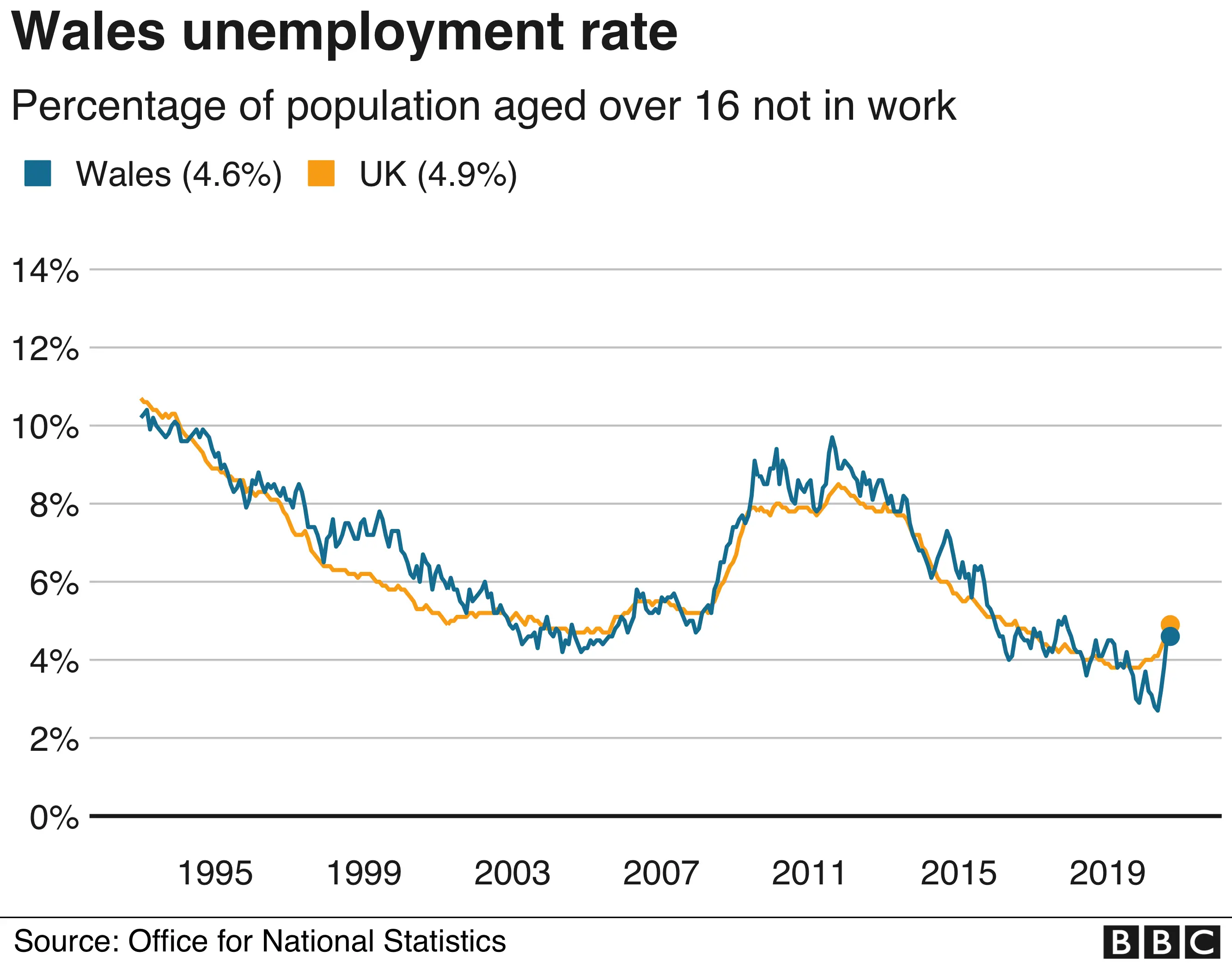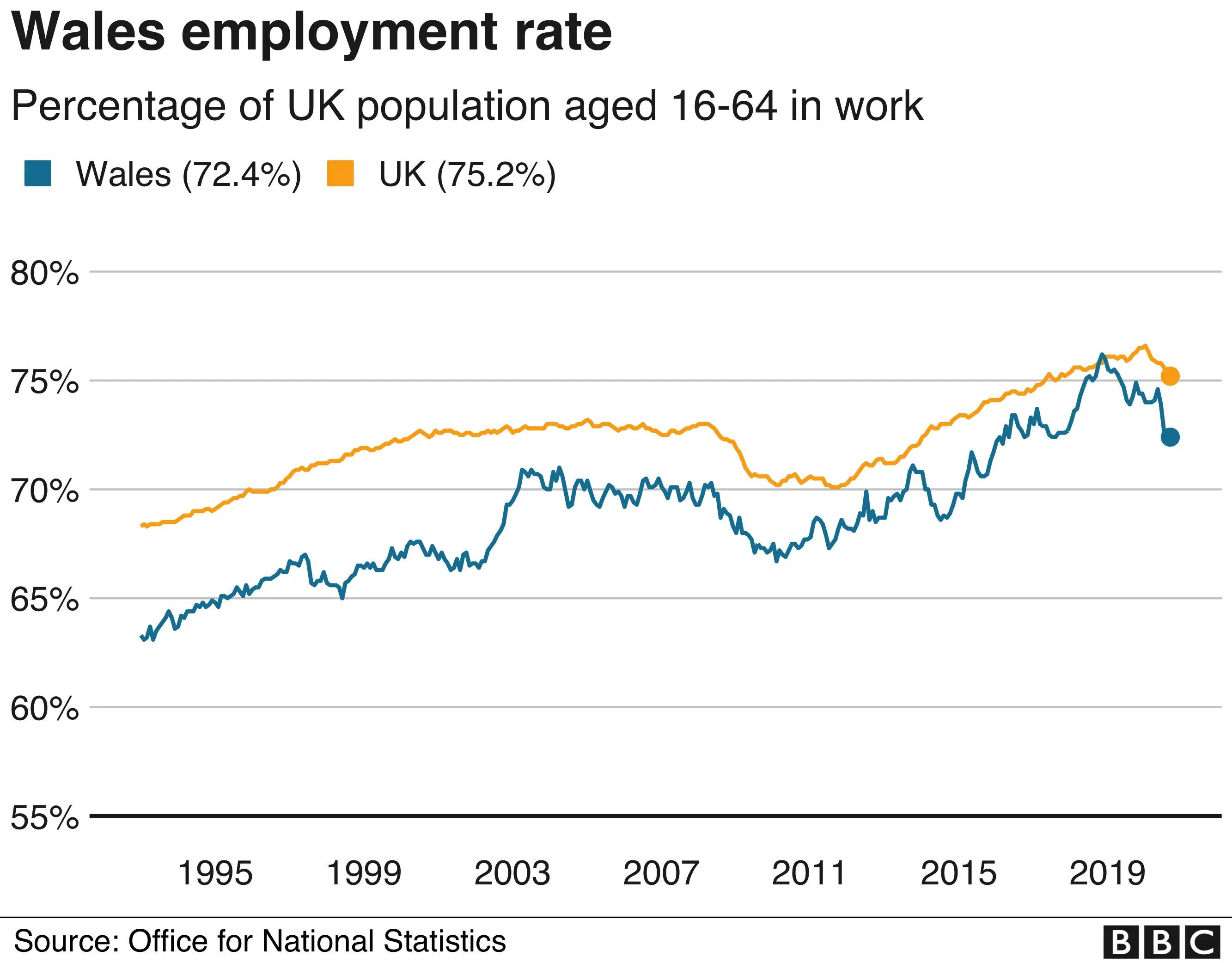Unemployment: Wales sees highest rise across UK
 Getty Images
Getty ImagesWales experienced the steepest rise in unemployment between August and October of any nation or region of the UK.
The rate of unemployment is now 4.6% in Wales and 4.9% across the UK as a whole, according to the latest official figures. Unemployment in Wales rose by 22,000 compared with the previous three months.
The Office for National Statistics' UK payroll data showed the hospitality sector had been the most severely affected, followed by wholesale and retail and manufacturing.
The rate of people not available for work is now at 24% - these are working age people who may be full-time carers or students, on long-term sick or have taken early retirement.
This is compared with 20.8% for the UK.
That means there were 459,000 "economically inactive" people in Wales, 8,000 more than in July, and 22,000 more than the same time last year.


Before the pandemic, Wales had seen low levels of unemployment.
Across the UK there are now 1,692,000 unemployed, which is 411,000 more than the same period a year ago.
Hospitality 'severely affected'
 Getty Images
Getty ImagesThe Office for National Statistics said the latest figures for the numbers of people paying tax in the UK showed there were 800,000 fewer on the payroll in November than in February, and one third of those people had been working in the hospitality sector.
This is the first time there has been a sector breakdown for the number of people on company payrolls.
What about furlough?
Furloughed workers are counted as employed in the statistics.
This latest set of labour market figures are for August to October, during which the UK government's Covid-19 pandemic furlough scheme was reducing the amount given to employers to pay workers.
The Coronavirus Job Retention Scheme (JRS) - known as furlough - was brought in on 20 March to help employers keep on staff during lockdown.
The scheme meant the Treasury originally paid 80% of an employee's wages while they were not working, up to a maximum of £2,500 per person per month.
The scheme was due to be replaced by the Job Support Scheme on 1 November.
On 31 October the chancellor announced the JRS was instead being extended to 31 March and made more generous again, with the UK government paying 80% of employee wages, but with the employer covering pension and National Insurance contributions.


Firms made more workers redundant in anticipation of the end of the furlough scheme, which was originally supposed to finish at the end of October.
The Treasury said the number of jobs furloughed in Wales reached a peak in July of 378,400 - roughly 29% of eligible jobs.
From 1 July, employers could apply for flexible furlough, meaning an employee could be furloughed for part of their time employed.
By the end of August, more than 130,000 were on some form of furlough. That represented around 10% of eligible Welsh employees, according to the latest Treasury statistics.

These latest figures make grim reading and are a reminder of the extent to which Covid-19 has hit families' living standards.
While some may be relieved the unemployment rate in Wales is still lower than for the UK as a whole, it is concerning that in the three months to October unemployment grew more steeply here than any other nation or region of the UK - in other words a greater proportion of people living in Wales lost their jobs.
When comparing areas it is important that we look at proportions not absolute numbers because they have different-sized populations.
It is interesting the latest figures from the ONS show that of the 819,000 jobs lost across the UK since February, one third of them have been in accommodation and hospitality.
These sectors, along with their suppliers, are very important to the Welsh economy.
It is also important to remember that the furlough scheme has been highly effective in terms of keeping people on the payroll and it is still in operation.
Even after that scheme ends it will take several months before we know the full extent of job losses across Wales.
